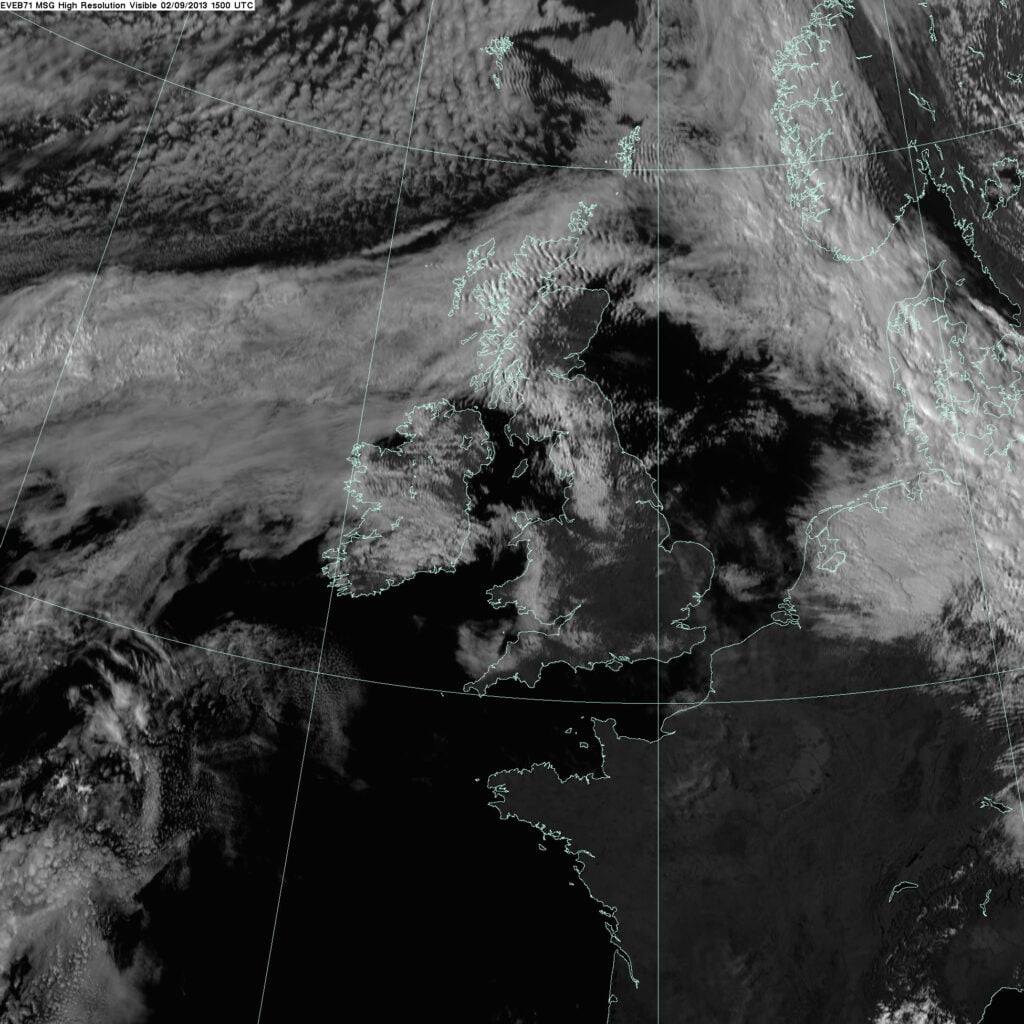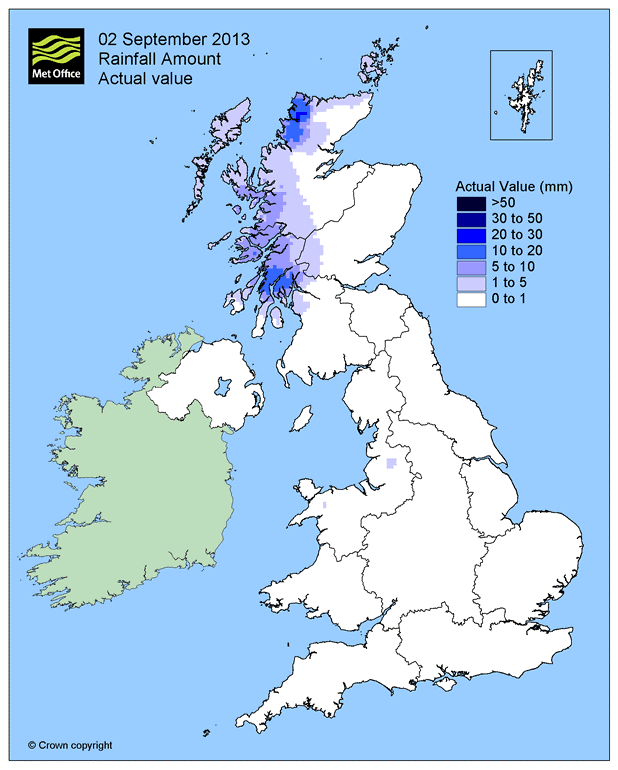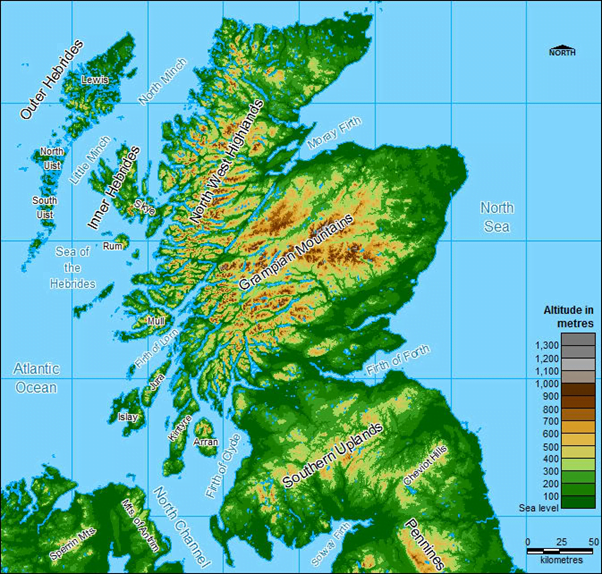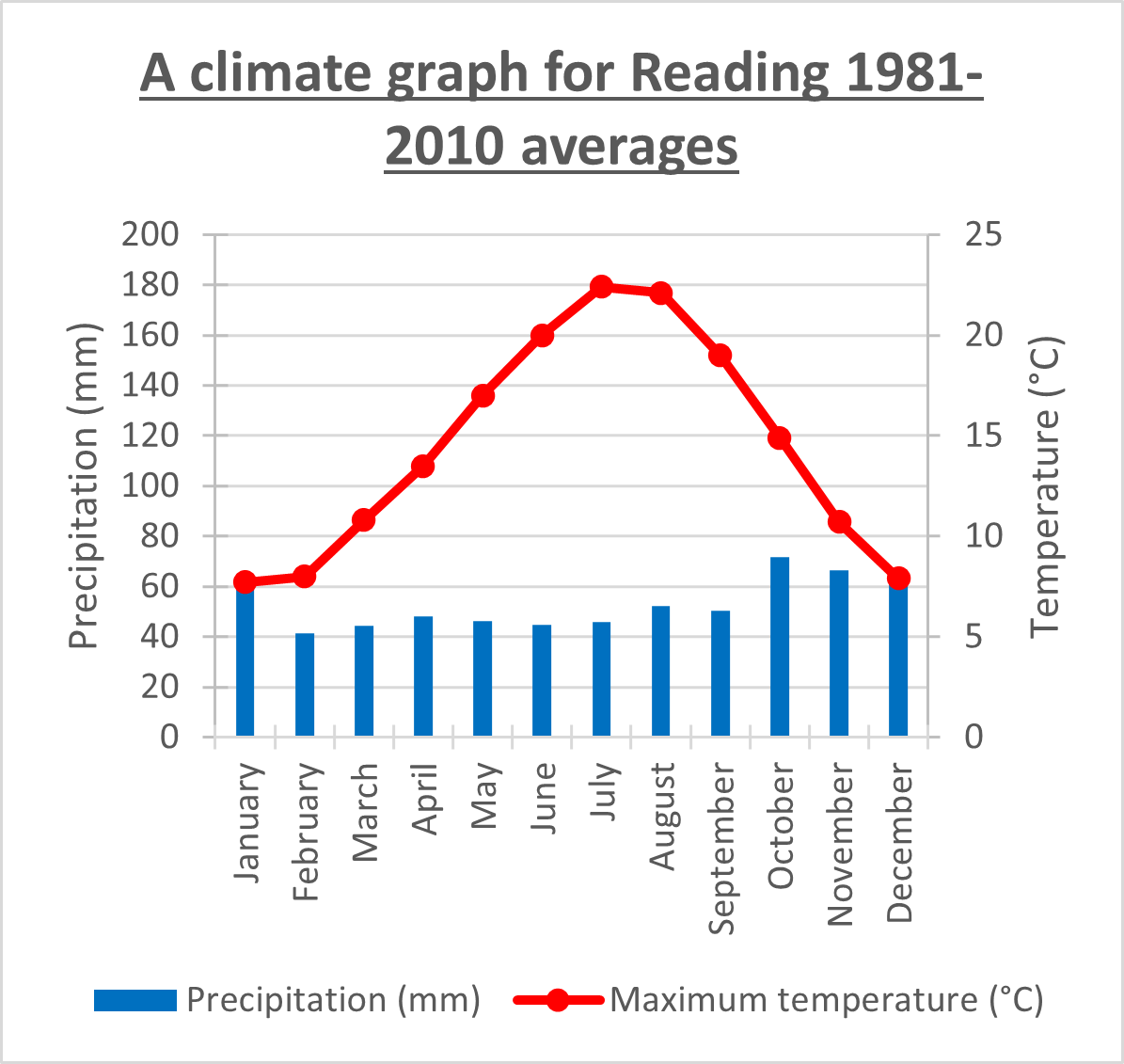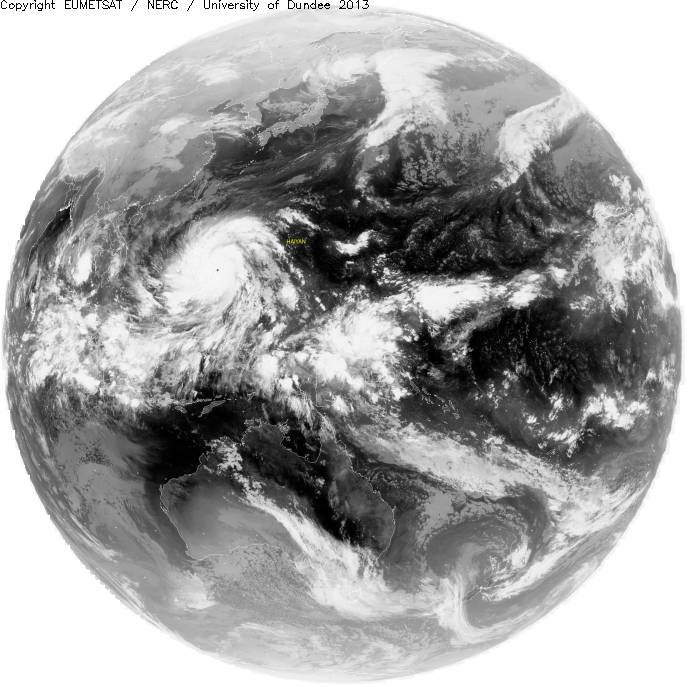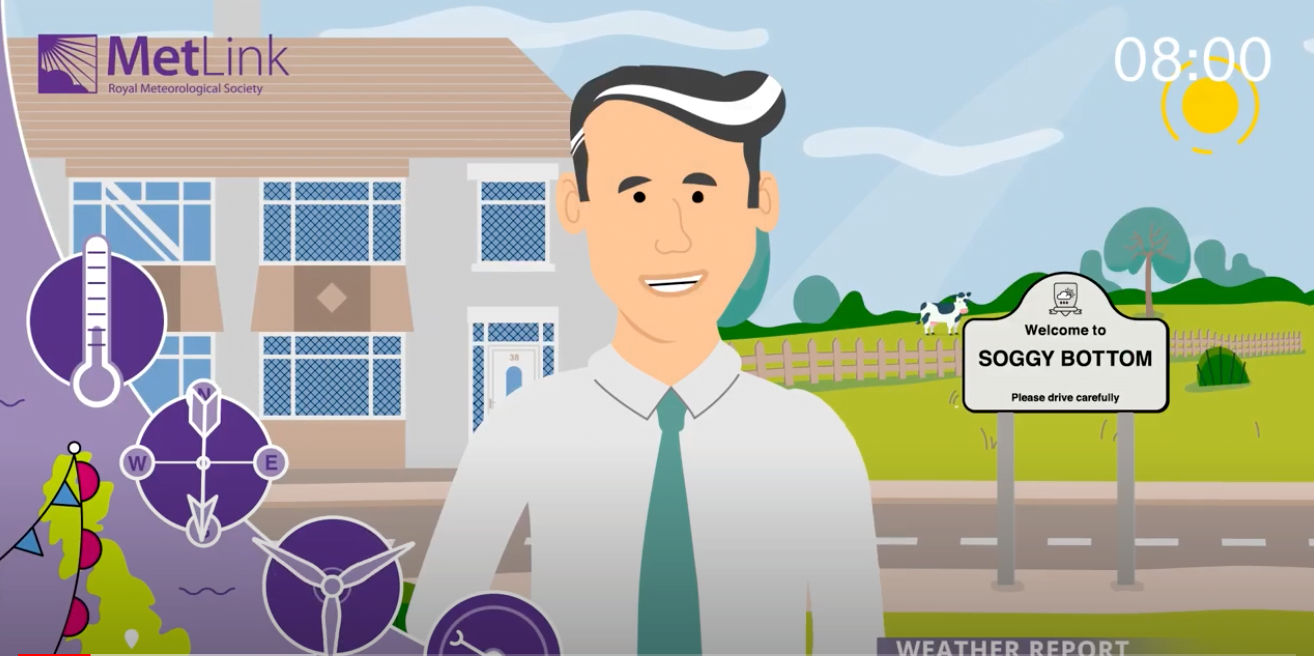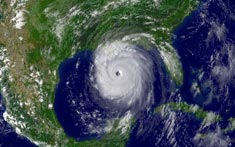This case study or ‘mystery’ is taken from the afternoon of the 2nd September 2013. It focusses on Scotland and N. England. It can be used for two different purposes – either to identify orographic/ relief rain (use images 2-6 below), or to go on to identify a case study of the Foehn Effect (use all images).
We recommend that teachers present students in groups with a series of images, sequentially, to allow them to work out what the weather is doing and why.
Expected Knowledge
Students should be
- Familiar with a map of the UK
- Know which way winds blow around a pressure system, and be able to identify fronts and pressure systems on a synoptic weather map
- Know about the 3 main ways in which rain can form (frontal, convective or relief/ orographic rain)
Suggested Lesson Opener
Make a cloud in a bottle or watch the video.
Notes for Teachers
Students can be helped, where appropriate to identify some of these points
Image 1
Image 1 – temperatures in degrees Centigrade at 15Z (1500GMT) (copyright Met Office)
The temperatures show that it is considerably warmer on the East side of Scotland than on the West. Temperatures are up to 9°C warmer on the East.
Why?
Image 2
Image 2 – a synoptic chart at 12Z (1200GMT) (copyright Met Office)
- There are no weather fronts over the UK, although the whole country is in the warm sector of a low pressure system over Iceland.
- There is a High Pressure system to the SW of the UK
- Winds blow clockwise around a High pressure system, and along the isobars
- The wind is therefore coming from the west (westerly winds) over Scotland
- Alternatively, you could consider the winds blowing anticlockwise around the Low pressure system to the North – this also indicates that the wind direction over Scotland is from the west.
- [We would normally associate this with Polar maritime/ returning Polar maritime air, but, in this case, if you follow the isoline back, the air has come from further south, so is Tropical maritime in nature.]
- We would generally expect clear skies over most of the UK in this situation.
Image 3
Image 3 – wind speed in knots at 15Z (1500GMT) (copyright Met Office)
Image 4
Image 4 – satellite image at 15Z (1500GMT) : (c) EUMETSAT / Met Office
This is a satellite image from 1500Z (1500GMT) showing visible radiation ie light. The white areas are where the Sun’s light is being reflected from clouds.
There is cloud over the west coast of Scotland and N. England
You can also see the cloud associated with the warm front to the East of the UK, and the cold front to the west.
- There is no front over Scotland, so the rain is not frontal rain.
Image 5
Image 5: Rainfall on 2nd September 2013 (copyright Met Office)
It is raining over the west coast of Scotland. Why?
- There is no front there, so it is not frontal rain
- Is it orographic rain or convective rain?
Image 6
A relief map of Scotland clearly shows the high ground on the East coast.
Synopsis
As the easterly winds blow in from the west, the air is forced to rise. As it rises, it cools until the rate of condensation is faster than the rate of evaporation. Cloud droplets form, which eventually become large enough to fall as rain.
Therefore, this rain is orographic or relief rain.
As the air descends again downwind of the mountains, the air warms and the cloud droplets evaporate.
As the cloud droplets form, they emit latent energy (heat) into the air around. This heat is remains in the air if the rain reaches the ground. This means that, downwind of the mountains when the air sinks, warms, and any remaining cloud droplets evaporate, there is more heat in the air than there was upwind of the mountains.
This is why temperatures were so much warmer on the east coast than on the west on this day!



